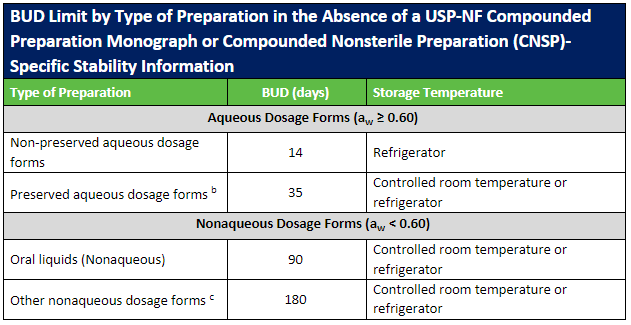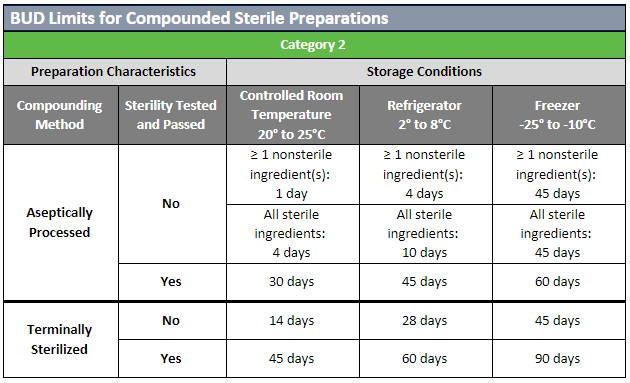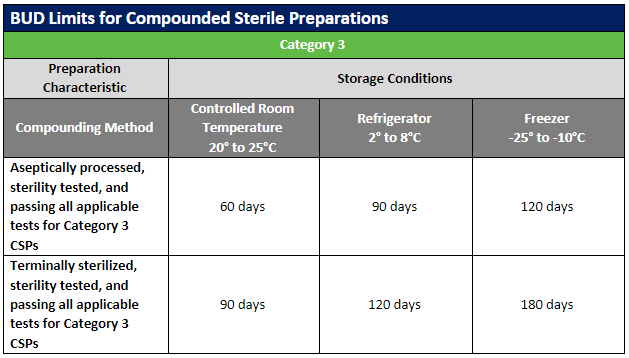EAGLE IS MORE THAN TESTING, LET OUR KNOWLEDGE WORK FOR YOU
GAP ANALYSIS AUDIT | COMPLIANCE SOLUTIONS & CONSULTING | CALIBRATIONS & CERTIFICATIONS | TESTING | & MORE
Beyond-Use Dating Revisions
The USP published updates to the USP General Chapters on compounding nonsterile (USP 795) and sterile (USP 797) preparations. Included in these revisions were updates to the beyond-use dates (BUDs) to clarify topics that were not consistently understood. Most of the revisions involved guidance on stability and sterility considerations for nonsterile and sterile preparations.
Thank you for reading this post, don't forget to subscribe!BUDs are defined as the date or time after which a compounded nonsterile preparation (CNSP) or compounded sterile preparation (CSP) may not be stored, used, or transported. These dates are calculated from the date or time of the compounding.
BUDs are necessary to help decrease the risks to patients by identifying the end date or time before it is a risk that either the CNSP or CSP is physically or chemically degraded, impacted by loss of protection of the product container system and/or possibly contaminated by microorganisms. The current guidance addresses the possibility that a preparation might inadvertently be contaminated during compounding and therefore the BUD is based on the drug’s chemical stability in conjunction with microbiological limits for patient safety.
The revised <795> introduced a new concept of Water Activity (aw) to clarify differences in “water-containing” CNSPs that have water available to support microbial growth (aw ≥ 0.6). This is in contrast with those preparations that have low water activity content (aw <0.6) such as nonaqueous CNSPs.
The revised <797> addresses compounded sterile preparations and changes the categories of CSPs from microbial contamination risk levels (low-, medium-, and high-risk) to Category 1, 2, and 3 CSPs.
Categories 1 and 2 are distinguished based on the environmental conditions in which they are prepared, the likelihood for microbial growth, and the time period within which they must be used.
Category 1 CSPs are typically made in unclassified segregated compounding areas and have shorter BUDs, either ≤ 12 hours at controlled room temperature (20°-25° C) or ≤ 24 hours at controlled refrigerator temperature (2° -8° C).
Category 2 CSPs must be prepared in a cleanroom suite and their beyond-use dates are determined by their compounding method, whether aseptically processed or terminally sterilized, and whether or not the batch has been subject to sterility testing. CSPs that have been terminally sterilized and have resulted in a passing sterility test may be assigned longer beyond-use dates than those that have been aseptically processed or batches that are not subject to sterility testing. Again, a shorter BUD must be assigned when the physical and chemical stability test results of the CSP are less than the BUD limits.
Aseptic processing is a process by which sterile products, whether purchased sterile or filter sterilized, are brought together in an environment and utilizing proper technique, to maintain their sterility. Terminal sterilization is the process by which products are sterilized in their final container-closure system using a lethal process such as steam, dry heat, or irradiation. Terminally sterilized CSPs afford a longer BUD because there is no manipulation of the product after sterilization.
Category 3 CSPs allow for longer BUDs and must be prepared in a cleanroom environment and have more requirements than Category 2 CSPs for personnel qualification, use of sporicidal disinfectants, frequency of environmental monitoring and stability data requirements. These BUDs vary between 60-180 days depending on whether the preparation was aseptically processed or terminally sterilized, whether sterility testing was performed, the controlled storage conditions used for the product and the completion of all applicable requirements for Category 3 CSPs. Additionally, Category 3 CSPs must be supplemented by bacterial endotoxin testing, where applicable. Again, a shorter BUD must be assigned when the physical and chemical stability test results of the CSP are less than the BUD limits.
To achieve Category 3 beyond-use dates personnel involved in compounding must demonstrate competency in garbing, hand hygiene, and aseptic technique through means of gloved-fingertip testing after gloving and after media-fill testing. Surface samples of the PEC must also be collected after media-fill testing. Requalification must occur no less than every 3 months. Additionally, all garb used in the production of CSPs must be sterile and no skin shall be exposed in the buffer room.
Production of Category 3 CSPs also requires a higher frequency of environmental monitoring and sporicidal disinfectant application. Viable air sampling shall be performed no less than monthly and viable surface sampling shall be performed in the PEC at the end of each batch, and no less than weekly throughout the classified space. Application of a sporicidal disinfectant shall occur weekly in the PECs, pass-through chambers, work surfaces outside the PEC, and on the floors.
BUDs assigned for Category 3 CSPs must be supported by stability data which requires that:
- The analytical method utilized must be stability-indicating and validated according to USP <1225>.
- The preparation must be prepared according to the exact formulation from which the stability data are derived.
- The preparation must be packaged and stored in a container and closure of the same materials of composition as that used in the stability study.
- Samples must be stored under the storage conditions specified in ICH QA1(R2).
Additionally, stability studies must include particulate matter testing for injections and ophthalmic solutions, container-closure integrity testing, and if the CSP is administered over multiple doses, antimicrobial effectiveness testing must be performed in accordance with USP <51>.
Getting Started
Call us at 800.745.8916 to request an initial consultation with our team so that we can discuss your specific Beyond-Use Dating needs.
OUR LABORATORIES
Eagle’s cutting-edge 35,000-square-foot facility and laboratory are equipped with advanced technologies and specialized segregated laboratory spaces to meet the diverse needs of our clients. This behind-the-scenes video provides you with an opportunity to witness testing while touring our laboratory.




